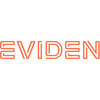Filter interviews by
Capgemini Engineering Analyst Interview Questions and Answers
6 Interview questions
Change management in Windchill PLM involves controlling product changes efficiently throughout the lifecycle.
Change management ensures that all product changes are documented and approved, reducing errors.
Windchill PLM provides tools for tracking change requests, such as Engineering Change Orders (ECOs).
For example, if a design modification is needed, an ECO can be initiated to assess impacts and approvals.
It inte...
Resources type defines the structure of the data while traits define reusable properties and behaviors.
Resources type specifies the structure of the data that can be accessed through the API endpoints.
Traits define reusable properties and behaviors that can be applied to multiple resources or methods.
Resources type is used to define the data model, while traits are used to define common functionalities like authen...
The OSI model has 7 layers that define how data is transmitted over a network.
Layer 1: Physical layer - deals with the physical aspects of transmitting data
Layer 2: Data link layer - responsible for error-free transfer of data between nodes
Layer 3: Network layer - manages the routing of data between nodes
Layer 4: Transport layer - ensures reliable delivery of data between applications
Layer 5: Session layer - estab...
Authentication verifies the identity of a user, while authorization determines what actions the user is allowed to perform.
Authentication confirms the identity of a user through credentials like passwords or biometrics.
Authorization controls access to resources based on the authenticated user's permissions.
Example: Logging into a system with a username and password is authentication, while being able to view certa...
String operations programs manipulate and modify strings.
Use built-in string functions like substring, replace, and split.
Implement algorithms like string reversal, palindrome check, and string compression.
Regular expressions can also be used for advanced string operations.
Examples: reversing a string, counting occurrences of a substring, converting a string to title case.
Single linked list operations involve adding and deleting nodes in a linear data structure.
To add a node, create a new node and set its next pointer to the current head, then set the head to the new node.
To delete a node, traverse the list until the node to be deleted is found, then set the previous node's next pointer to the node after the one being deleted.
Be careful to handle edge cases such as adding to an emp...
Capgemini Engineering Analyst Interview Experiences
17 interviews found
(3 Questions)
- Q1. Resources type vs traits in raml
- Ans.
Resources type defines the structure of the data while traits define reusable properties and behaviors.
Resources type specifies the structure of the data that can be accessed through the API endpoints.
Traits define reusable properties and behaviors that can be applied to multiple resources or methods.
Resources type is used to define the data model, while traits are used to define common functionalities like authenticat...
- Q2. Authentication vs authorization
- Ans.
Authentication verifies the identity of a user, while authorization determines what actions the user is allowed to perform.
Authentication confirms the identity of a user through credentials like passwords or biometrics.
Authorization controls access to resources based on the authenticated user's permissions.
Example: Logging into a system with a username and password is authentication, while being able to view certain fi...
- Q3. What is cloudhub 2.0
- Ans.
CloudHub 2.0 is a cloud-based integration platform that allows organizations to connect applications, data, and devices across multiple environments.
CloudHub 2.0 offers enhanced scalability and performance compared to its predecessor.
It provides a centralized platform for managing integrations, APIs, and data flows.
Organizations can use CloudHub 2.0 to streamline their business processes and improve efficiency.
Examples...
Skills evaluated in this interview
I applied via Company Website and was interviewed in Sep 2024. There were 3 interview rounds.
NORMAL aptitude questions
(1 Question)
- Q1. Read the given sentences
(1 Question)
- Q1. Tell about yourself
- Ans.
I am a dedicated and detail-oriented analyst with a strong background in data analysis and problem-solving.
Experienced in conducting thorough research and interpreting complex data sets
Skilled in using various analytical tools and software
Strong communication skills for presenting findings and recommendations
Proven track record of delivering actionable insights to drive business decisions
Write 2 code for answers
(2 Questions)
- Q1. Oops database SQL questions
- Q2. All basic questions
(2 Questions)
- Q1. Strength weakness
- Q2. Nothing much it was
Interview Preparation Tips
(2 Questions)
- Q1. Tell me about yourself
- Q2. What is your b.tech project
Averages , percentage , numbers
I appeared for an interview in Feb 2024.
MCQ based questions,mainly pseudo code
(1 Question)
- Q1. One on one interview with interviewer with some basic concepts on oops and array
(1 Question)
- Q1. Asked about your college projects and which technology you worked on
Interview Preparation Tips
I applied via Campus Placement
Maths aptitude with pseudocode
Moderate coding round on basic questions

Easy to carck not only aptitude some technical questions involved
(3 Questions)
- Q1. Quote simple and basic technical questions
- Q2. Tell me about your project
- Ans.
I worked on a project analyzing customer data to identify trends and improve marketing strategies.
Analyzed customer data to identify patterns and trends
Used statistical models to predict customer behavior
Developed marketing strategies based on data insights
Implemented A/B testing to measure the effectiveness of different campaigns
- Q3. Oops concepts and basic questions on one programming language
Interview Preparation Tips
I appeared for an interview before Jun 2024, where I was asked the following questions.
- Q1. What is OOPS in Java
- Q2. Do you know change management in Wind chill PLM?
- Ans.
Change management in Windchill PLM involves controlling product changes efficiently throughout the lifecycle.
Change management ensures that all product changes are documented and approved, reducing errors.
Windchill PLM provides tools for tracking change requests, such as Engineering Change Orders (ECOs).
For example, if a design modification is needed, an ECO can be initiated to assess impacts and approvals.
It integrate...
Top trending discussions






Capgemini Engineering Interview FAQs
The duration of Capgemini Engineering Analyst interview process can vary, but typically it takes about less than 2 weeks to complete.
Tell us how to improve this page.
Capgemini Engineering Interviews By Designations
- Capgemini Engineering Software Engineer Interview Questions
- Capgemini Engineering Analyst Interview Questions
- Capgemini Engineering Software Developer Interview Questions
- Capgemini Engineering Senior Software Engineer Interview Questions
- Capgemini Engineering Consultant Interview Questions
- Capgemini Engineering Senior Consultant Interview Questions
- Capgemini Engineering Associate Engineer Interview Questions
- Capgemini Engineering Associate Consultant Interview Questions
- Show more
Interview Questions for Popular Designations
Overall Interview Experience Rating
based on 14 interview experiences
Difficulty level
Duration
Analyst Interview Questions from Similar Companies
Capgemini Engineering Analyst Reviews and Ratings
based on 14 reviews
Rating in categories
|
Senior Software Engineer
1.9k
salaries
| ₹4.9 L/yr - ₹22.4 L/yr |
|
Technical Lead
1.4k
salaries
| ₹7.6 L/yr - ₹26.7 L/yr |
|
Software Engineer
1.3k
salaries
| ₹3 L/yr - ₹10 L/yr |
|
Network Engineer
416
salaries
| ₹3 L/yr - ₹9.9 L/yr |
|
Senior Consultant
412
salaries
| ₹7.8 L/yr - ₹29 L/yr |

Genpact

DXC Technology

Sutherland Global Services

Optum Global Solutions
- Home >
- Interviews >
- Capgemini Engineering Interview Questions
















